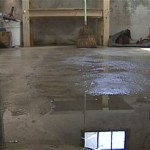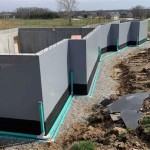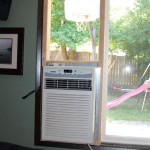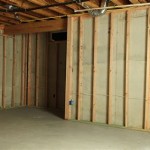Essential Aspects of Waterproofing Paint for Basement Walls
Protecting your basement walls from water damage is crucial to maintain a healthy and safe indoor environment. Waterproofing paint emerges as an effective solution, providing a reliable barrier against moisture penetration. Understanding the essential aspects of waterproofing paint for basement walls empowers homeowners to make informed decisions and ensure the longevity of their property.
Types of Waterproofing Paint
Waterproofing paints vary in composition and application methods. Two primary types include:
- Cementitious Paint: Formulated with cement and acrylic polymers, cementitious paint forms a durable, breathable barrier that resists water and hydrostatic pressure.
- Epoxy Paint: Featuring high-performance epoxy resins, epoxy paint creates a waterproof, chemical-resistant coating with excellent adhesion.
Choosing the Right Paint
Selecting the appropriate waterproofing paint depends on the specific needs of your basement wall. Consider the following factors:
- Moisture Level: Determine the severity of moisture penetration by performing a moisture test. Cementitious paint is suitable for low to moderate moisture levels, while epoxy paint is ideal for high moisture or hydrostatic pressure.
- Surface Condition: Assess the condition of your basement wall, including any cracks or imperfections. Cementitious paint requires a sound surface for proper adhesion, while epoxy paint can bridge minor cracks.
- Durability: Epoxy paint typically offers superior durability and resistance to abrasion, making it suitable for high-traffic areas or areas prone to heavy wear.
Application Process
Proper application is essential to ensure the effectiveness of waterproofing paint. Follow these general steps:
- Surface Preparation: Remove any dirt, dust, or loose paint. Repair any cracks or imperfections with appropriate patching materials.
- Apply Primer: Apply a compatible primer to improve adhesion and enhance the paint's performance.
- Paint Application: Apply multiple coats of waterproofing paint according to the manufacturer's instructions. Allow each coat to dry thoroughly before applying the next.
- Curing Time: Allow the paint to cure fully as recommended by the manufacturer before exposing it to moisture.
Benefits of Waterproofing Paint
Waterproofing paint for basement walls offers numerous benefits:
- Prevents Water Damage: Creates a waterproof barrier to protect walls from moisture, preventing damage to drywall, studs, and other materials.
- Reduces Mold and Mildew: Moisture control inhibits mold and mildew growth, promoting a healthier indoor environment.
- Improves Air Quality: Eliminating moisture sources reduces musty odors and improves overall air quality.
- Increases Home Value: A dry and protected basement enhances the property's value and marketability.
Conclusion
Waterproofing paint for basement walls represents a cost-effective and reliable solution to prevent water damage and create a healthier indoor environment. By understanding the different types, choosing the right paint for your needs, applying it correctly, and appreciating its benefits, homeowners can ensure the longevity and well-being of their homes.

The Case Against Waterproof Paints Wall Coatings Why Fail What To Do Instead

Waterproofing Basement Walls With Drylok Paint Home Repair Tutor

Ames Blue Max 5 Gal Basement Waterproofing Sealer Regular Grade Bmx5rg The Home

The Case Against Waterproof Paints Wall Coatings Why Fail What To Do Instead

Advances In Spray Applied Basement Coatings Waterproof Magazine

Waterproof Your Basement

The Right Wrong Way To Waterproof Your Basement Wall

The Case Against Waterproof Paints Wall Coatings Why Fail What To Do Instead

Kilz Basement Masonry Waterproofer

The Case Against Waterproof Paints Wall Coatings Why Fail What To Do Instead
See Also








